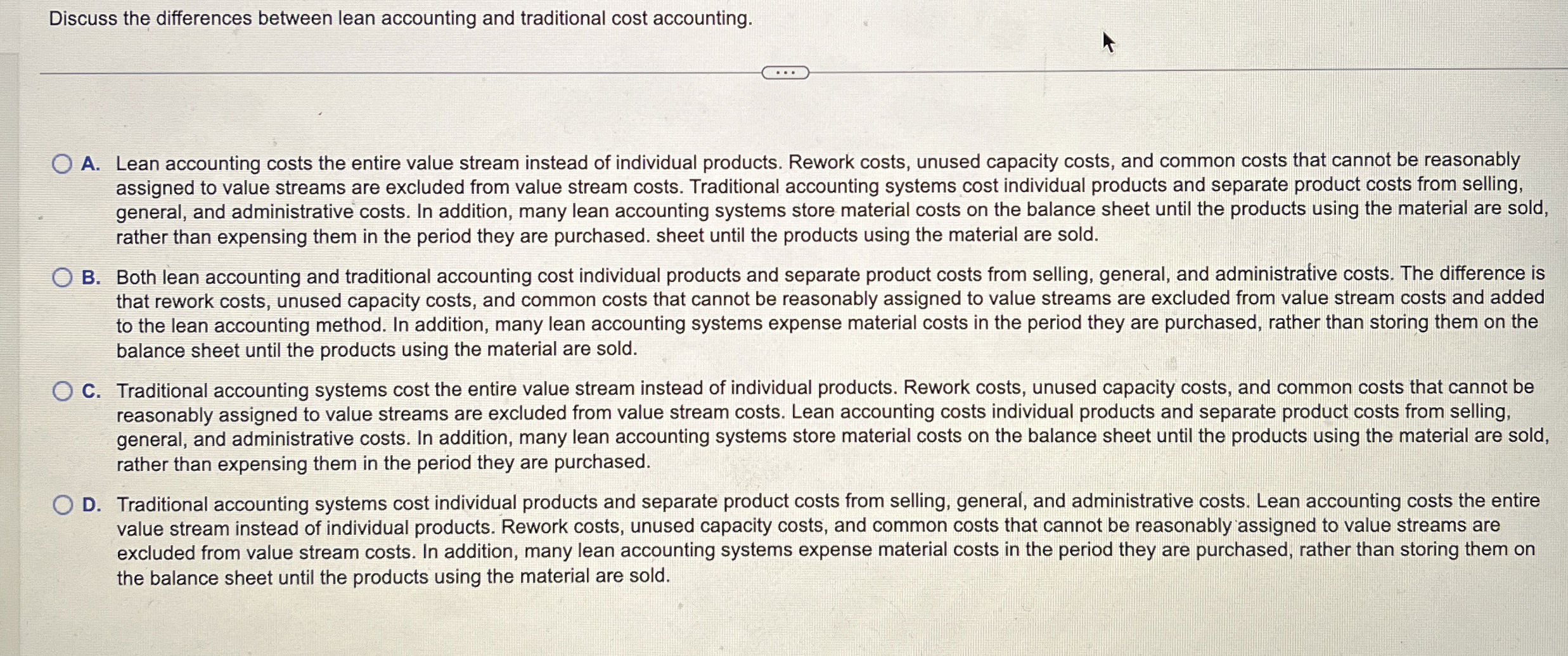Answered step by step
Verified Expert Solution
Question
1 Approved Answer
Discuss the differences between lean accounting and traditional cost accounting. A . Lean accounting costs the entire value stream instead of individual products. Rework costs,
Discuss the differences between lean accounting and traditional cost accounting.
A Lean accounting costs the entire value stream instead of individual products. Rework costs, unused capacity costs, and common costs that cannot be reasonably assigned to value streams are excluded from value stream costs. Traditional accounting systems cost individual products and separate product costs from selling, general, and administrative costs. In addition, many lean accounting systems store material costs on the balance sheet until the products using the material are sold, rather than expensing them in the period they are purchased. sheet until the products using the material are sold.
B Both lean accounting and traditional accounting cost individual products and separate product costs from selling, general, and administrative costs. The difference is that rework costs, unused capacity costs, and common costs that cannot be reasonably assigned to value streams are excluded from value stream costs and added to the lean accounting method. In addition, many lean accounting systems expense material costs in the period they are purchased, rather than storing them on the balance sheet until the products using the material are sold.
C Traditional accounting systems cost the entire value stream instead of individual products. Rework costs, unused capacity costs, and common costs that cannot be reasonably assigned to value streams are excluded from value stream costs. Lean accounting costs individual products and separate product costs from selling, general, and administrative costs. In addition, many lean accounting systems store material costs on the balance sheet until the products using the material are sold, rather than expensing them in the period they are purchased.
D Traditional accounting systems cost individual products and separate product costs from selling, general, and administrative costs. Lean accounting costs the entire value stream instead of individual products. Rework costs, unused capacity costs, and common costs that cannot be reasonably assigned to value streams are excluded from value stream costs. In addition, many lean accounting systems expense material costs in the period they are purchased, rather than storing them on the balance sheet until the products using the material are sold.

Step by Step Solution
There are 3 Steps involved in it
Step: 1

Get Instant Access to Expert-Tailored Solutions
See step-by-step solutions with expert insights and AI powered tools for academic success
Step: 2

Step: 3

Ace Your Homework with AI
Get the answers you need in no time with our AI-driven, step-by-step assistance
Get Started


